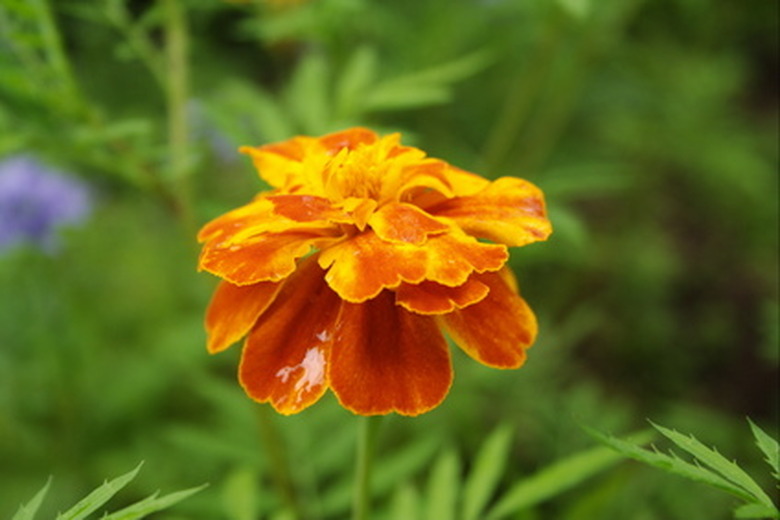Fertilizers For Flowering Plants
Flowers add not only color but also enjoyment to any landscape. Color therapy is an alternative practice whose practitioners believe that colors influence your emotions and well-being; the Therapy Color website states that color helps the body to heal itself. You can help your flowering plants, whether they're trees, bulbs, perennials or annuals, produce their maximum number of blooms if you fertilize them with special fertilizers designed for that purpose.
Don’t Over Fertilize
Texas A&M University cautions against giving newly purchased plants fertilizer for at least one month after you bring them home. Nurseries generally add fertilize to the potting soil of bedding plants; often it is sufficient for up to three months. For houseplants, they recommend fertilizing once every month or two from early spring until midsummer, and reducing your feeding to once or twice during winter. You'll need to fertilize outdoor annual flowering plants such as pansies, petunias, marigolds and others every two to three weeks during the spring through fall growing season.
- Flowers add not only color but also enjoyment to any landscape.
- For houseplants, they recommend fertilizing once every month or two from early spring until midsummer, and reducing your feeding to once or twice during winter.
Recommended N-P-K Content of Fertilizer
The three most important plant nutrients are nitrogen, phosphorus and potassium, expressed as ratios on fertilizer packages. Flowering plants do best when you give them a fertilizer with a ratio of 1-2-1 (nitrogen-phosphorus-potassium), so any plant food with this ratio is a good choice, according to Texas A&M. Less nitrogen produces more flowers, while higher concentrations of nitrogen produce more foliage, at the expense of flowers. For example, a plant food having an N-P-K ratio of 10-20-10 is appropriate for flowering plants, whether potted or in the ground. These numbers indicate that the plant food contains 10 percent nitrogen, 20 percent phosphorus and 10 percent potassium; the remaining 60 percent is comprised of inert materials.
Fox Farm Open Sesame Flowering Fertilizer
Farm Open Sesame Flowering Fertilizer all-natural plant food has an N-P-K ratio of 5-45-19, making it useful for forcing flowering plants into bloom. The Planet Natural website recommends that you begin feeding your flowering plants with this product during the fifth or sixth week of their lives. Only a small amount of this plant food is needed per gallon of water. According to the website, Open Sesame contains these ingredients: ammonium phosphate, potassium sulfate, kelp, mono potassium phosphate, zinc, iron, chelating agent, manganese and disodium ethylenediamine tetra acetate (EDTA).
- The three most important plant nutrients are nitrogen, phosphorus and potassium, expressed as ratios on fertilizer packages.
- Farm Open Sesame Flowering Fertilizer all-natural plant food has an N-P-K ratio of 5-45-19, making it useful for forcing flowering plants into bloom.
Miracle-Gro Bloom Booster
This product has an N-P-K ratio of 15-30-15, making it appropriate for bringing flowering plants into bloom. It's a granular formula that you mix with water and spray on both foliage and the soil around your flowering plants. The manufacturer claims it is safe and won't burn plants. It begins to have an immediate effect, so it will cause plants to respond quickly with flowers. You can use Miracle-Gro Bloom Booster on potted plants, annuals and perennials.
Peter’s Professional Super Blossom Booster Plant Food
The Shared Reviews website gives their highest customer rating for this product. It contains an N-P-K ratio of 10-50-10 in a water-soluble formula that is good for fertilizing all flowering plants, including roses. One reviewer says that this plant food creates numerous compact flowers on all of his flowering plants. If you use this product every week to 10 days, he claims that your flowering plants will perform well.
- This product has an N-P-K ratio of 15-30-15, making it appropriate for bringing flowering plants into bloom.
